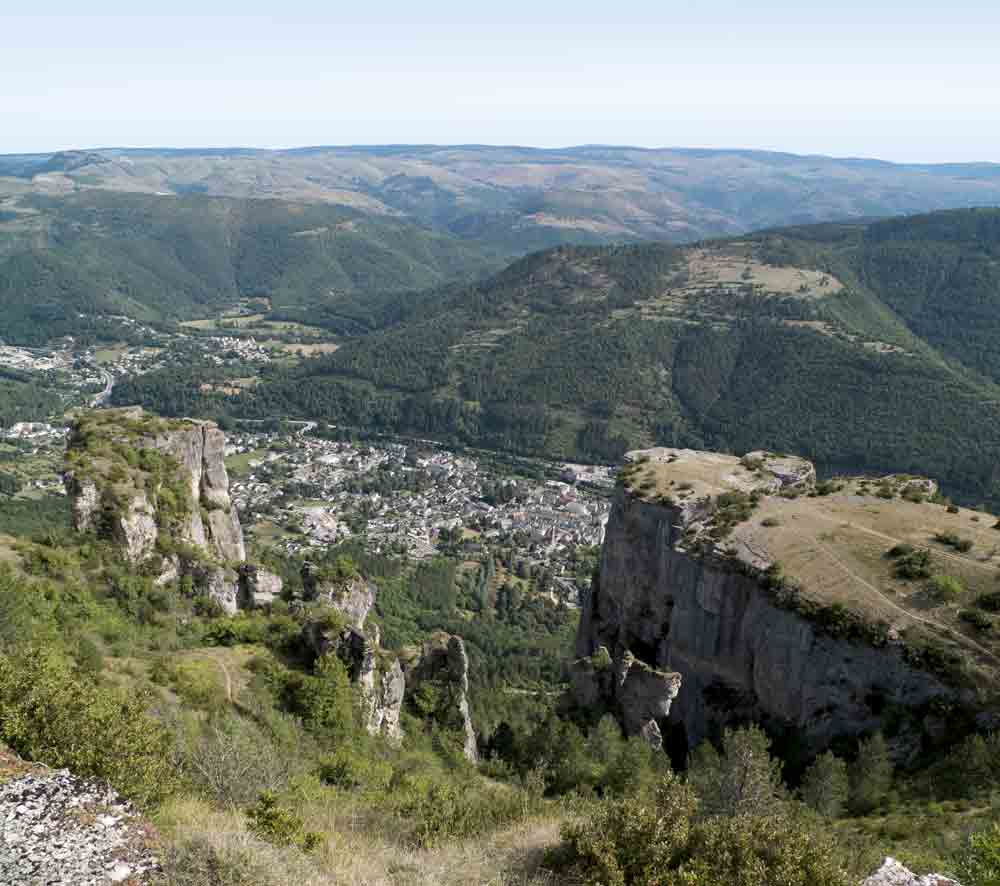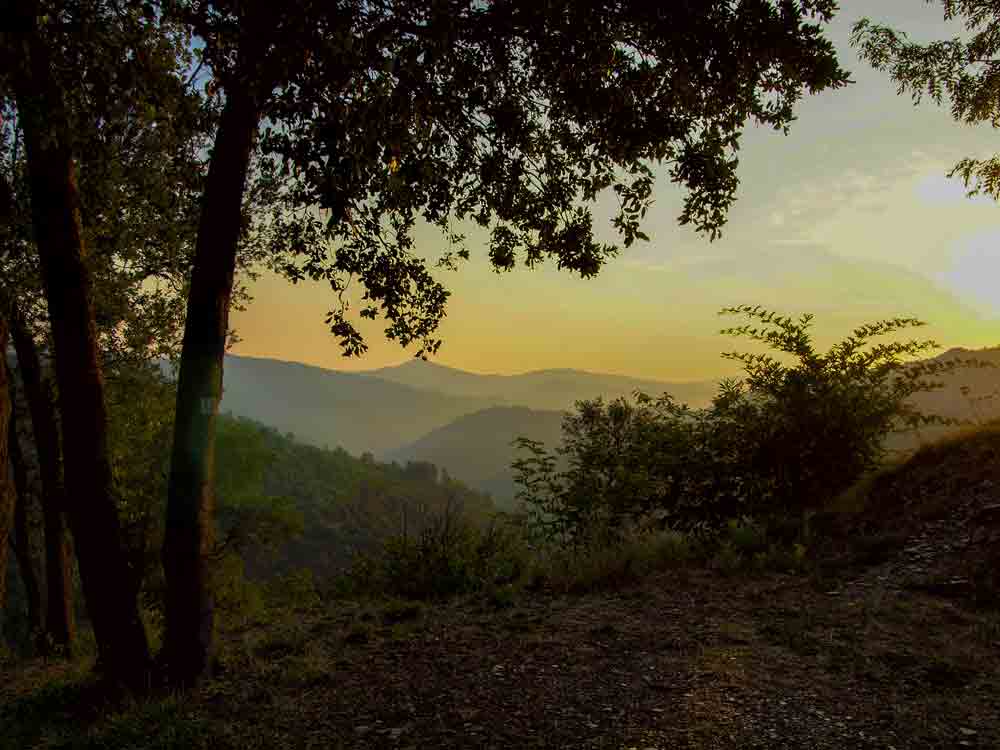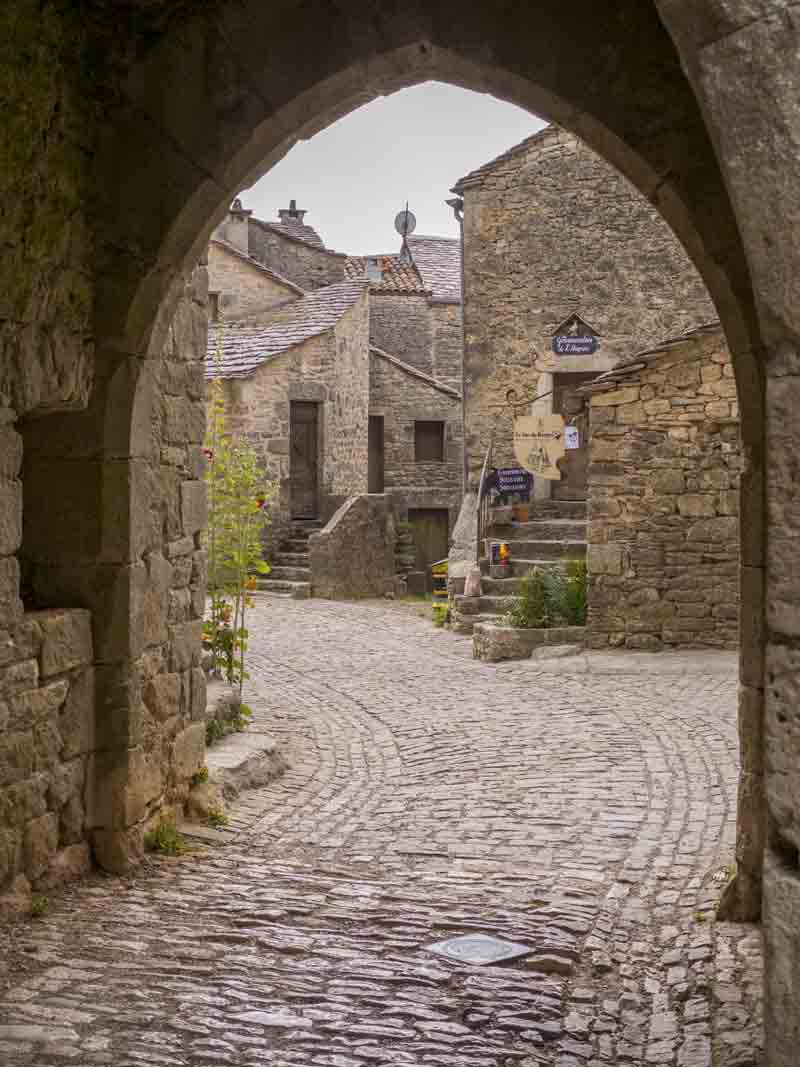Motorhome travel: France's Cevennes National Park
Tim Griffiths trades the dour UK weather for the dramatic scenery of the Cevennes National Park in France...
As I have retired – but my wife hasn’t – I decided to go to the sunny mid-south of France to escape poor British weather and explore on my own.
Having used a late-night ferry, I stopped at the busy aire in Wissant. Passing through Rouen, I headed southwards.
Driving south from Clermont-Ferrand on the scenic A75, toll-free for this long section, I left behind the unmistakable volcanic cones of the Auvergne to wind gently to very high ground with some of the loveliest scenery I’ve seen from a motorway. Much of the time I was at an altitude of around 1,000m (3,281ft).
Dramatic scenery in the Cevennes National Park
Suddenly, just before the signs announced that I was entering the Cévennes National Park, the scenery became more dramatic. The limestone escarpments and deep valleys of the Causses unfolded and pine forests gave way to sweet chestnuts.
It’s wonderfully easy to get sidetracked – and why not? Heading for Florac via the N88, the route crosses an open and scenic high plateau (the ‘causses’ is French for such a plateau) before winding down to the valley floor where it runs alongside and crosses a diminutive River Lot.

Turning right here to follow the river is a wonderful diversion as some of France’s loveliest towns and villages nestle into the banks.
I descended to Florac around a series of hairpin bends to meet the River Tarn. Florac’s castle houses the administrative centre for the national park. It’s a vast area of high plateaux, deep valley gorges and softly sculptured forests. The Michelin Road Atlas for the area has so many of the roads marked as ‘scenic’ that it would have been easier to highlight the few that are not.
Folllowing in Robert Louis Stevenson's footsteps
In the nineteenth century, Robert Louis Stevenson traversed the Cévennes from north to south in the company of his donkey and the journey was transformed into one of his first books, Travels With a Donkey in the Cévennes. His route is largely duplicated on the French long distance GR70 trail.
Stevenson and his donkey started at Le Monastier-sur-Gazeille and retook the high ground at Florac, more or less at the mid-point of their walk; it’s relatively easy to do much the same from the well-situated (and free) aire. You can even replicate his walk with your own hired donkey. I did a fair chunk of Stevenson’s journey on foot.
Florac is a pleasant, small town with typical café culture in the evenings and its large aire is a mere five minutes’ walk from the centre.
To get to the real heart of the Cévennes you really need to get off the main roads and one of the best is the Corniche de Cévennes, which starts from the southern outskirts of Florac’s D106. It takes you all the way to Alès and is strongly recommended.
Whilst well graded at mostly less than seven per cent, there are some narrow corners and sections with passing places, though traffic is very sparse. Most of the roads are perfectly passable by motorhomes, but some can be rather narrow (I advise checking locally before embarking on anything less than a ‘D’ road). Don’t let that put you off, though – this is a traveller’s treasure trove.
One of the attractions of this area is its tranquility. Here, high in the hills, I found places where all I heard was birdsong and insects.
Wonderful hummingbird hawk moths are common, imitating their namesakes. Iridescent beetles competed for my attention and I spotted large birds of prey, too. Lizards are common and you may see the odd snake, but they soon get out of your way.
The only mild and rare intrusion in all this serenity is the occasional aircraft passing high overhead. It’s wonderful being able to gaze at a night sky in which you can see so much. I enjoyed many a warm evening sipping a glass of wine and just gazing upwards. I’d forgotten what can be seen as, so often, our night sky is spoiled by lighting.

Being largely in a national park area, I stayed on official aires when possible, but there are countless opportunities for considerate wild camping, too, and I was never short of choices for the night.
There’s high ground, too. At 1,700m (5,577ft), Mont Lozère is high enough to have a small winter ski area. The town of Florac lies on the River Tarnon, almost at the confluence of three major valleys. The Lot and Tarn are rightly well known, but I’d also recommend the third route to Millau, the Gorges de la Jonte.
Dropping off to the southwest from the Corniche des Cévennes, this dramatic route passes imposing caves, vultures’ nests and charming old villages before reaching Norman Foster’s incredible bridge that carries the N9 across the valley at the Tarn just above Millau.
Choose here to pay your toll for the quick route or go through town for free (but only if you are under the 3.5-tonne mark).
This is a great area for just following your instincts and I drove for pleasure, rather than seeking to cover distance. Meyrueis, which marks the border between the Grand Causses and the Cévennes, is a pretty town after which I was soon high on a limestone plateau before dramatically descending to Trèves and climbing up again.

If your final destination lies further south, don’t miss one final little jewel. Just before the A75 makes its inexorable plunge from the ‘causses’ towards the coast, there lies an amazing little fortified village at La Couvertoirade. In a landscape which has so many limestone outcrops, which look like castles, here’s one that really is!
There’s good parking outside the village and a number of motorhomes clearly regarded the €3 (£2.71) daily parking fee as a cheap overnight. That was the only night I had to pay to stay, but it was worth it to see the village, almost devoid of other visitors in the early morning and late evenings.
La Couvertoirade is almost completely enclosed by ramparts, within which are tiny streets of fifteenth century houses, which crowd in on themselves with many artisan shops and restaurants.
On this highly enjoyable trip I made excellent use of my Camperstop Europe app on my mobile phone. France really does cater so well for motorhomes; I really must return with my wife to explore further!
This feature originally appeared in the January 2019 edition of MMM magazine - read it in full by ordering a digital back issue copy here.









Recent Updates
Engine management lights: all you need to know
What is the engine management light? What does it mean, and what do I have to do? ...
Motorhome air suspension: all you need to know
Motorhomes are heavy and the additional weight of equipment and height of the bodywork can increase the loads ...
Motorhome WiFi: how to get better motorhome internet
Staying connected on the move is more and more essential, so relying on campsite WiFi isn't an option – here ...
A class of their own - our guide to A-class motorhomes
Thinking of trading up to an A-class, or even going straight to the top of the motorhome tree? We guide you ...
Explore overseas on a motorhome dream tour
Enjoy exotic travel in a campervan or motorhome by hiring, swapping with someone else or exporting your ...
Motorhome water systems: everything you need to know
On-board water is an important part of every motorhome – here’s everything you need to know ...
Campervanning in Europe: what you need to know
Whether you're planning a leisurely drive through the French countryside, navigating bustling city streets in ...
Campervan security: all you need to know
With thefts on the increase, it’s important to know how to keep your campervan secure and prevent campervan ...
Campervan furniture: everything you need to know
Our campervan experts guide you through all the essentials for your campervan, including tables, chairs, ...
Campervan finance: how to fund your purchase
Here we look at the different types of campervan finance available, to help you decide what’s the best option ...
Other Articles
Britain’s best used motorhomes
Want a great motorhome without paying the premium for a new one? Here's a guide to the best you can get in the pre-owned market for each layout, ...
Which motorhome? Choosing the perfect motorhome for you
Choosing a motorhome or campervan is one of the biggest buying decisions you’ll ever make, so it's important ...
Campervan washroom essentials: stay fresh on the road
Our guide will take you through the campervan washroom essentials you'll need so you're well-prepared for ...
Dogs in campervans: all you need to know
Follow our advice and your dog will enjoy campervanning as much as you do ...
Electric campervans: all you need to know
Our guide will take you through everything you need to know about electric campervans and what the future ...
Motorhome electrics: a complete guide to your motorhome electrical set-up
Motorhome electrics can dramatically enhance the convenience and comfort of your vehicle – but they can be ...
Lighting for campervans: all you need to know
We guide you through all the lighting options available for you and your campervan, including interior ...
Electric bikes for motorhomes: our ultimate guide
Read our comprehensive guide to electric bikes for motorhome owners, helping you add electric power to your ...
Our guide to 'cheap' motorhomes in 2024
If you're on the hunt for an affordable new motorhome, this is the best place to start – we've rounded up a ...
Campervans in winter: all you need to know
Here's your guide to preparing your campervan for the colder months, whether you will be using it or putting ...